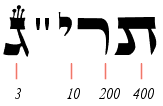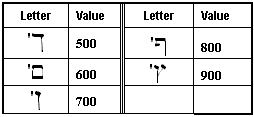|
The year number on the Jewish calendar represents the number of years since creation, calculated by adding up the ages of people in the Tanakh back to the time of creation. To calculate the Jewish Year from our Gregorian calendar, you subtract 1,240 and then add 5,000. For example, if the year is 2005, subtract 1,240 to get 765. Then add 5,000 to obtain the Jewish year of 5765. Note that this works only up to Rosh HaShanah of the current Gregoraian calendar: after Rosh HaShanah, add one more year:
|







